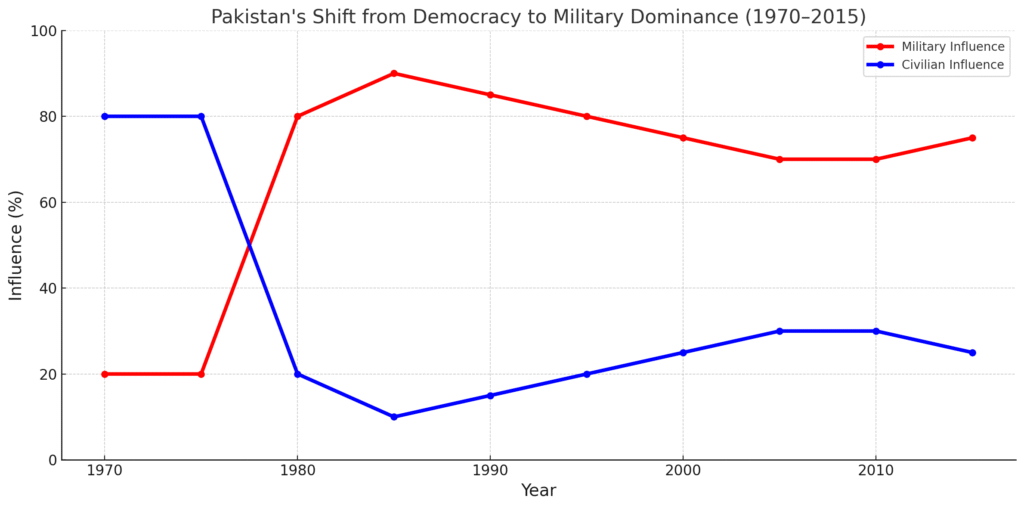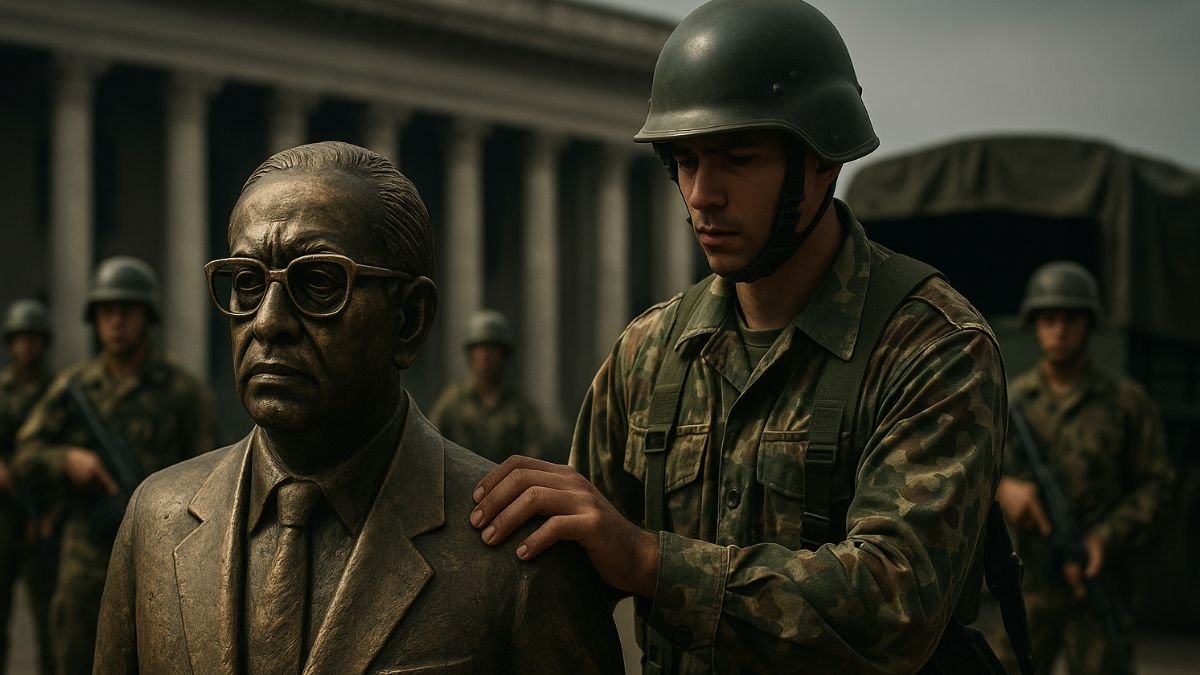Some dates don’t just sit quietly in the pages of a calendar. They echo in the heartbeats of nations. For Pakistan, July 5, 1977 is one of those dates.
It wasn’t just the fall of a government that night—it was the fall of an entire idea. A country that was born seeking freedom under the banner of religion found itself shackled by the same forces it once embraced.
What should have been the sound of democracy rising was drowned by the marching boots of the army. And from that day on, Pakistan walked a path where guns overruled votes and religious decrees often spoke louder than its Constitution.
General Zia-ul-Haq’s Seizure of Power
On the night of July 5, General Mohammad Zia-ul-Haq led Operation Fair Play, toppling the elected Prime Minister, Zulfikar Ali Bhutto.
Bhutto, the very man who had once appointed Zia as the army chief, was overthrown by him. It wasn’t just a coup; it was a brutal betrayal.
What was called “Operation Fair Play” was anything but fair. The power shift was not a game—it was a complete hijack of Pakistan’s future.
Crushing Democracy: The Rise of Martial Law
The very next day, Pakistan woke up to martial law. Democracy was silenced overnight. Bhutto was arrested, accused of corruption, electoral rigging, and abuse of power.
But behind these charges was a much darker truth—the military wanted complete control, and Bhutto stood in their way.
Eventually, Bhutto was hanged, but his death was more than just the end of a leader. It signaled the slow death of Pakistan’s democratic dream.
Redefining Pakistan: The Islamic Makeover
As soon as General Zia took the reins, he began reshaping Pakistan’s identity. He publicly declared that Pakistan was made in the name of Islam and its future must rest solely within Islamic principles.
He pushed forward a wave of Islamization. Sharia laws were introduced. Public flogging, amputations, and harsh punishments became part of the legal system.
Women’s rights were pushed aside. Minority protections were quietly erased. Even school textbooks were rewritten to promote extremist ideologies. Children were taught that jihad wasn’t just a concept—it was a duty.

Zia’s War on Secularism
For Zia, secularism wasn’t just a political difference—it was a poison. He saw secular thinking as a threat to the nation. Government offices, courts, schools, and the media were all refashioned to reflect strict Islamic ideals.
Religious hardliners gained power like never before, and Pakistan began turning into a state where fatwas (religious decrees) often replaced constitutional debate.
The Afghan War: Pakistan’s Deal with America
Around the same time, the Soviet Union invaded Afghanistan. For Zia, this became a golden opportunity. The United States wanted to push back against Soviet influence. Zia offered Pakistan’s soil to train Afghan mujahideen fighters. In return, the U.S. flooded Pakistan with weapons, money, and political support.
Pakistan became the frontline for America’s Cold War. But in the process, it became the breeding ground for militant jihadist groups.
The Birth of Jihad Networks
The war against the Soviets gave birth to something Zia could not control—a network of militants, religious fighters, and jihadi groups that would later grow into the Taliban and Al-Qaeda.
What started as a U.S.-Pakistan partnership against Soviet forces eventually turned into Pakistan’s own nightmare.The very fighters trained and supported on Pakistani soil would go on to destabilize the region for decades to come.
Zia’s Mysterious Death
On August 17, 1988, Zia’s plane crashed shortly after takeoff from Bahawalpur. All 31 people on board perished. To this day, the cause remains uncertain. Some say it was a technical failure, others whisper it was a carefully planned assassination. Whatever the truth, Zia died—but the seeds he planted continued to grow.
The Legacy: A Pakistan Still Struggling
Today, Pakistan continues to wrestle with the aftershocks of that fateful day. The military still dominates national politics. Democracy exists, but often under the long shadow of army generals. Fatwas still echo in courtrooms. Minorities still struggle for space. The path Pakistan walked since July 5 remains lined with instability, religious extremism, and political turmoil.
July 5: The Turning Point That Still Defines Pakistan
Some wounds fade with time, but July 5 left scars that never truly healed. It was the day when a nation that fought for freedom willingly walked into chains—and many of those chains remain tightly locked today.
| Year | Event |
|---|---|
| 1977 | Military coup by General Zia-ul-Haq |
| 1979 | Bhutto executed |
| 1979–1988 | Islamization policies implemented |
| 1979–1989 | Soviet-Afghan war, U.S.-Pakistan alliance |
| 1980s | Rise of militant groups, mujahideen training camps |
| 1988 | Zia’s death in plane crash |
| Present Day | Ongoing military influence, religious extremism |
References for the Article
Books
- “Pakistan: A Hard Country” – Anatol Lieven
A comprehensive book explaining Pakistan’s political, military, and religious structures in detail. - “Military Inc.: Inside Pakistan’s Military Economy” – Ayesha Siddiqa
An in-depth study of the economic and political dominance of the Pakistan military. - “Zulfi Bhutto of Pakistan: His Life and Times” – Stanley Wolpert
A biography of Zulfikar Ali Bhutto that covers his political journey, rise, and fall. - “Pakistan: Between Mosque and Military” – Hussain Haqqani
Focuses on the relationship between Pakistan’s military and religious groups, especially during Zia’s era. - BBC Pakistan Profile – Timeline
Read More: Why the U.S. Paused Military Aid to Ukraine at a Critical Moment
Watch India Pakistan Breaking News on The Ink Post. Get Latest Updates, Latest News on Movies, Breaking News On India, World, Explainers.
Follow us on Facebook and Instagram and LinkedIn and Twitter to Stay updated!
